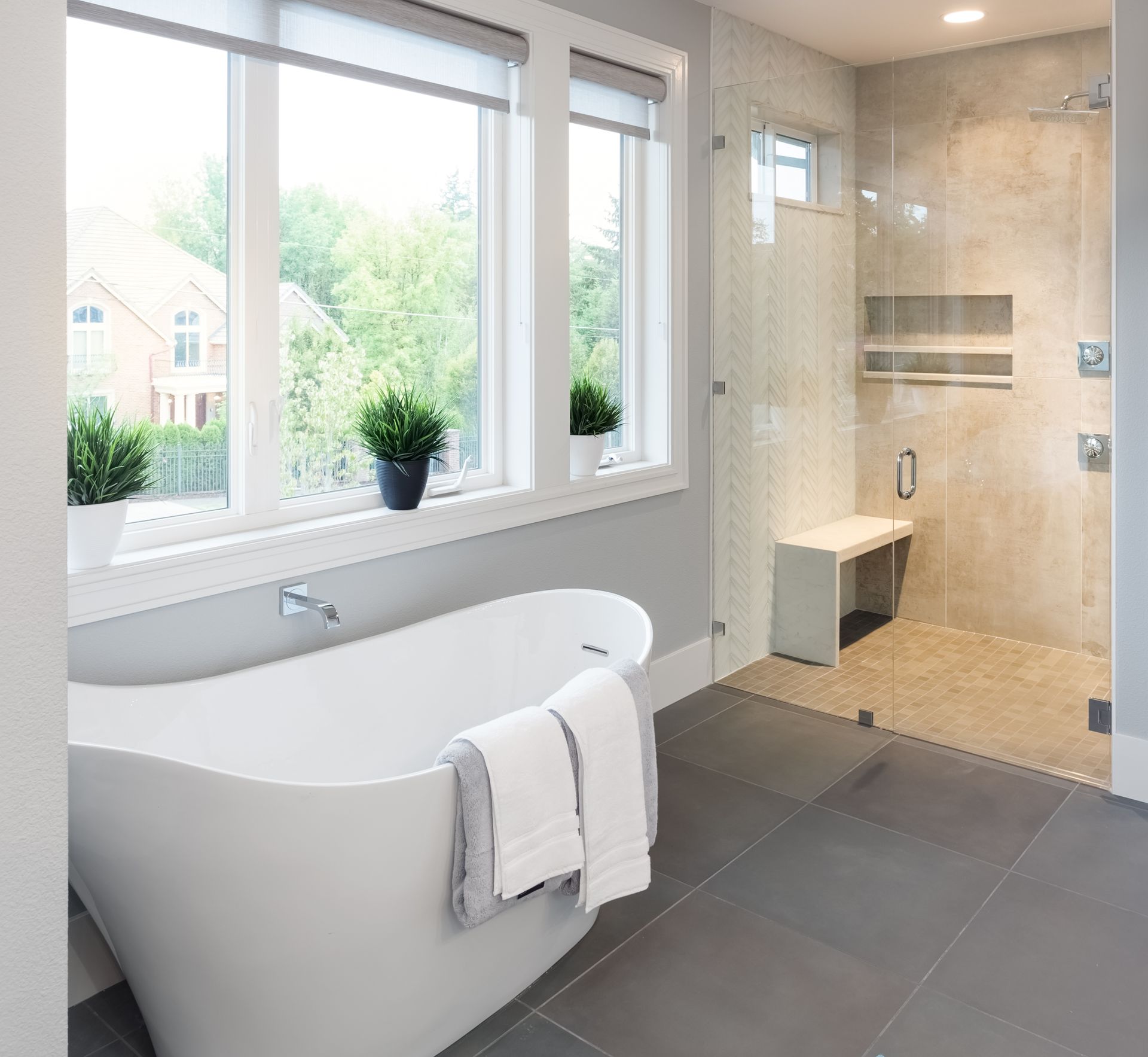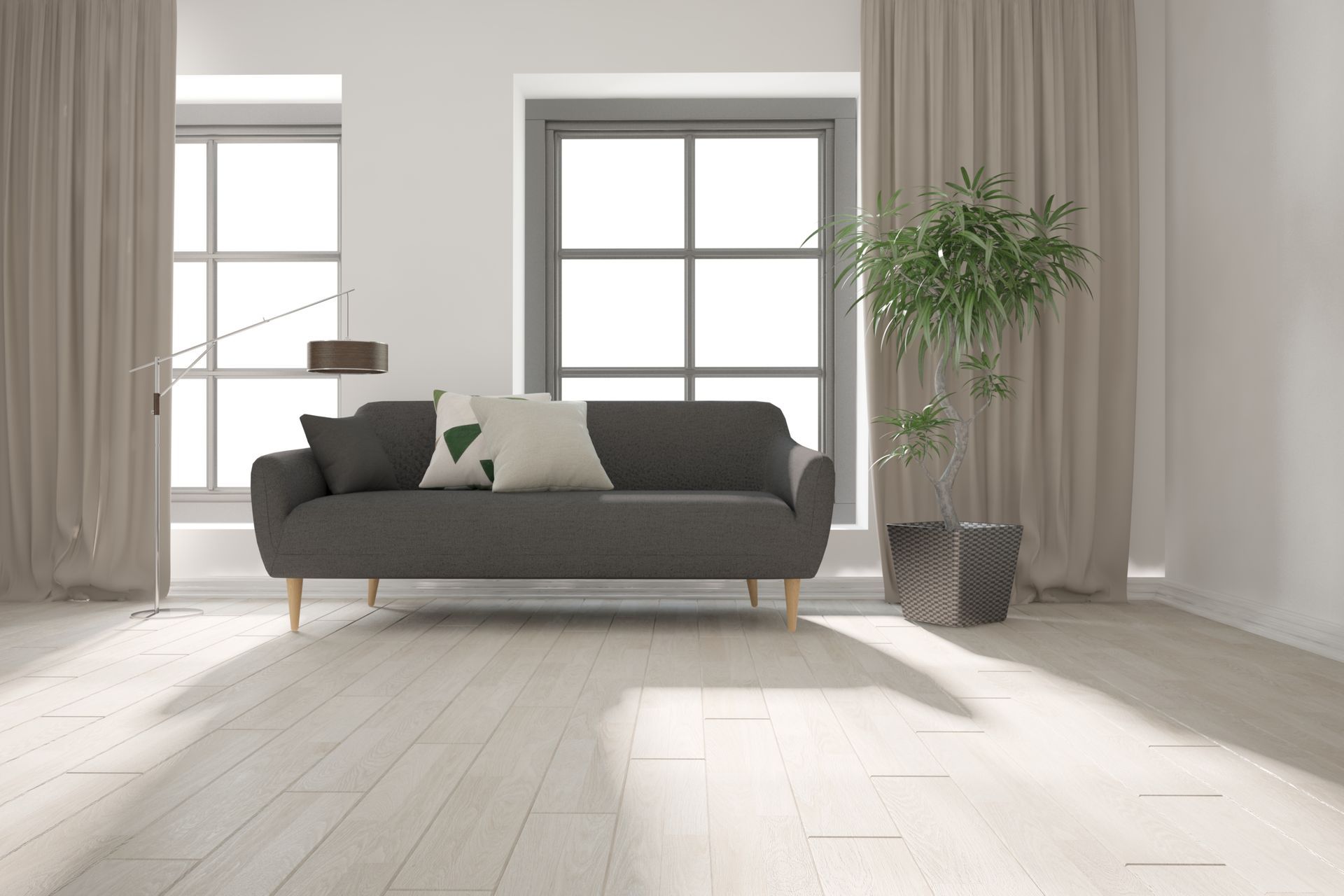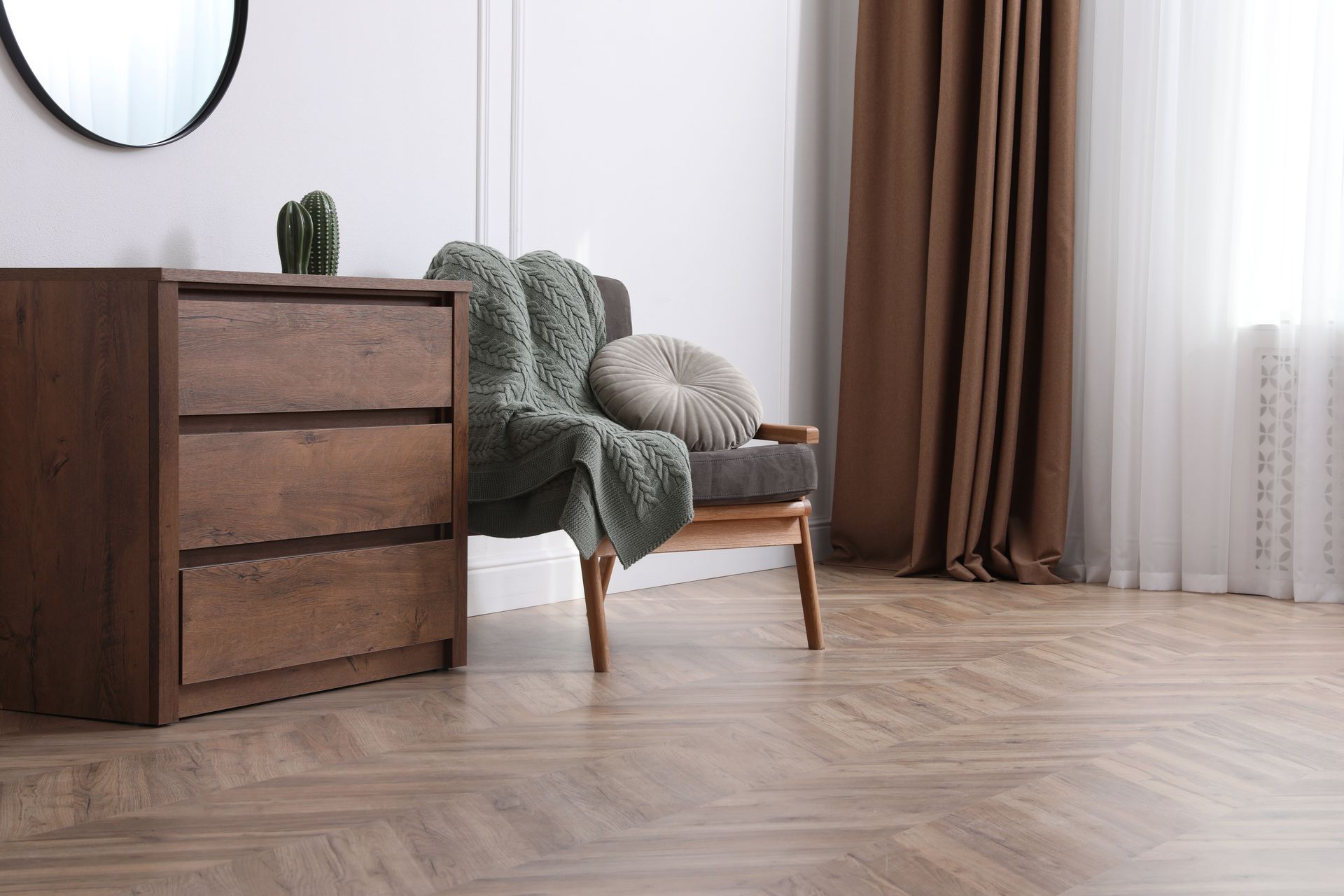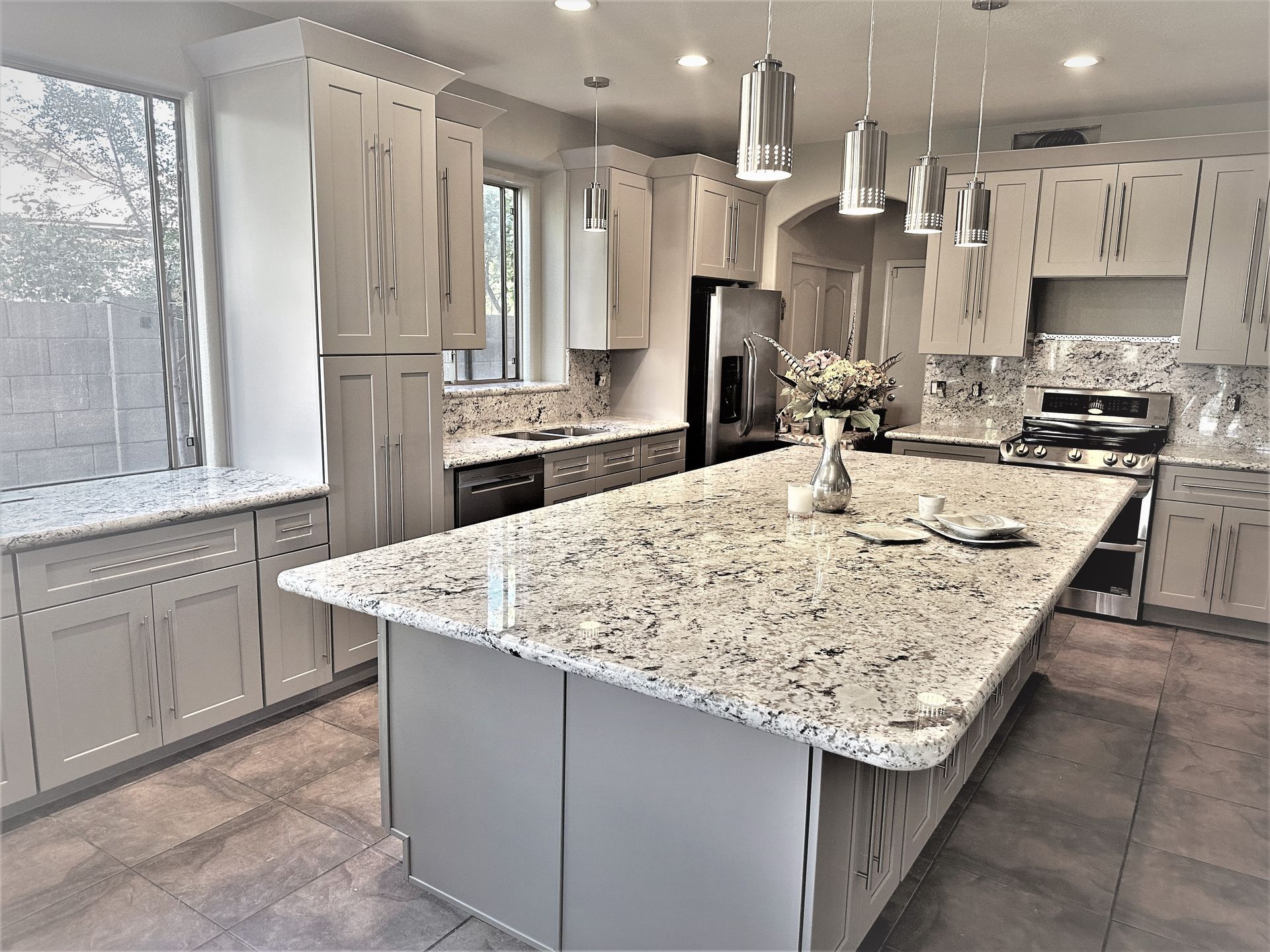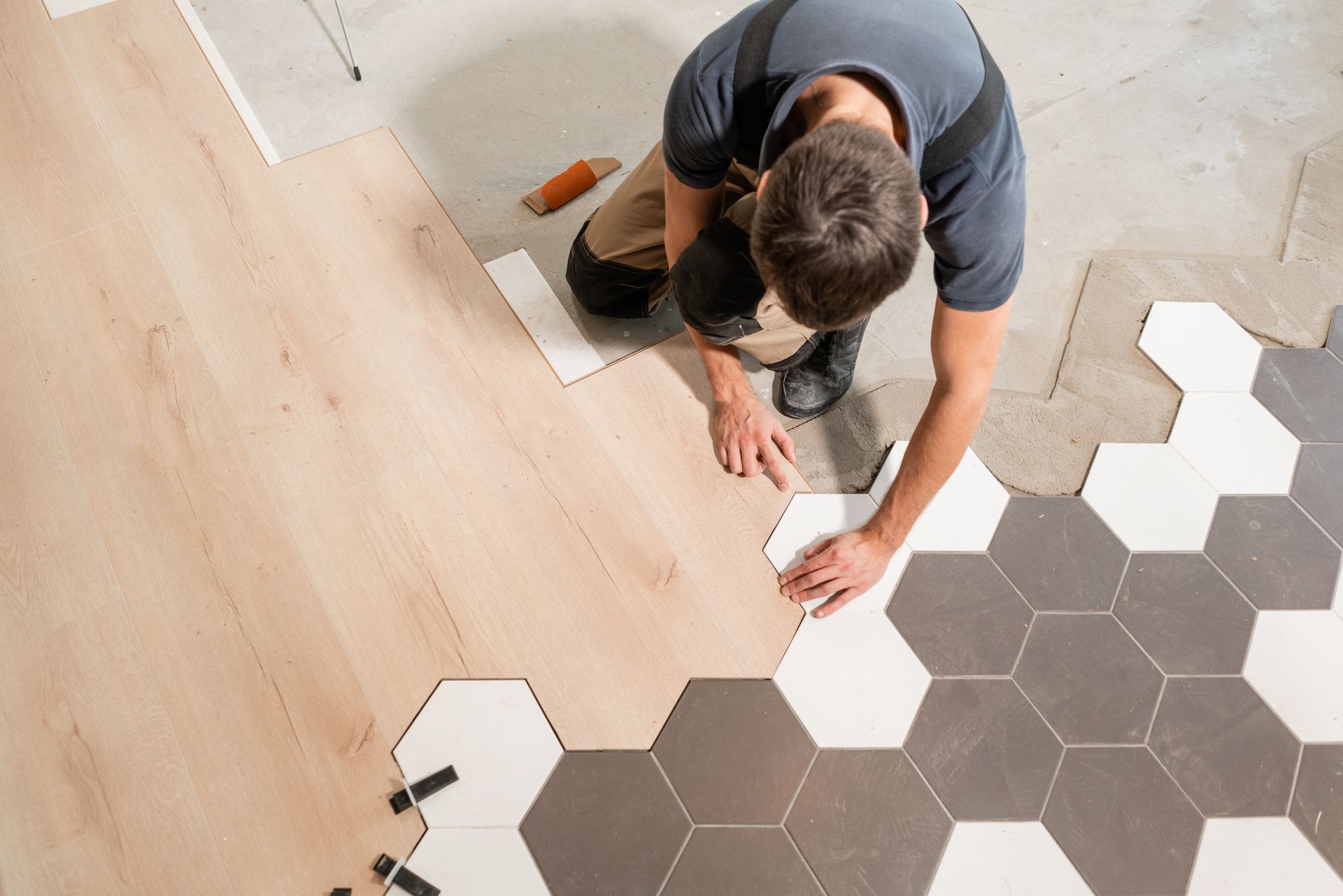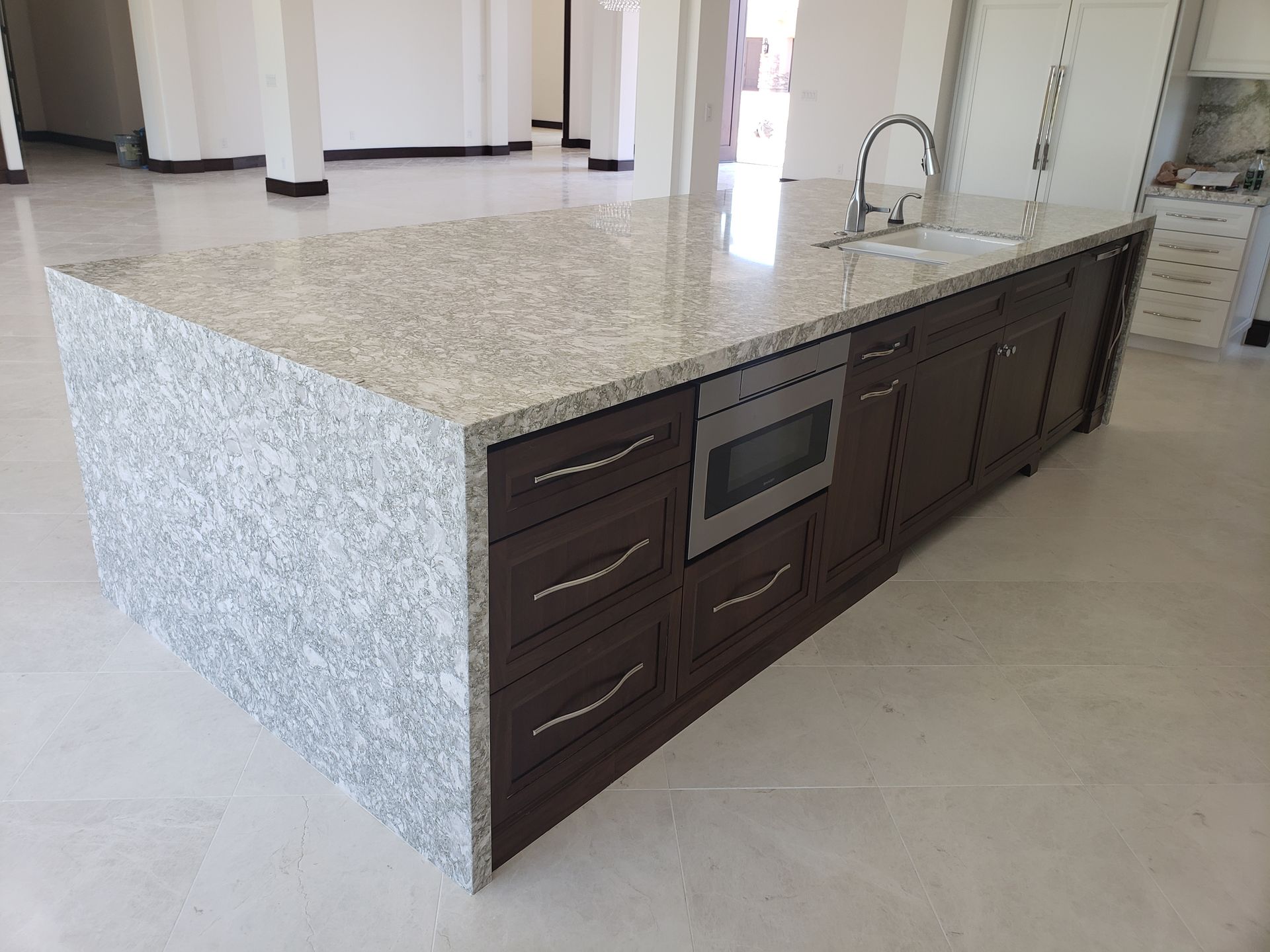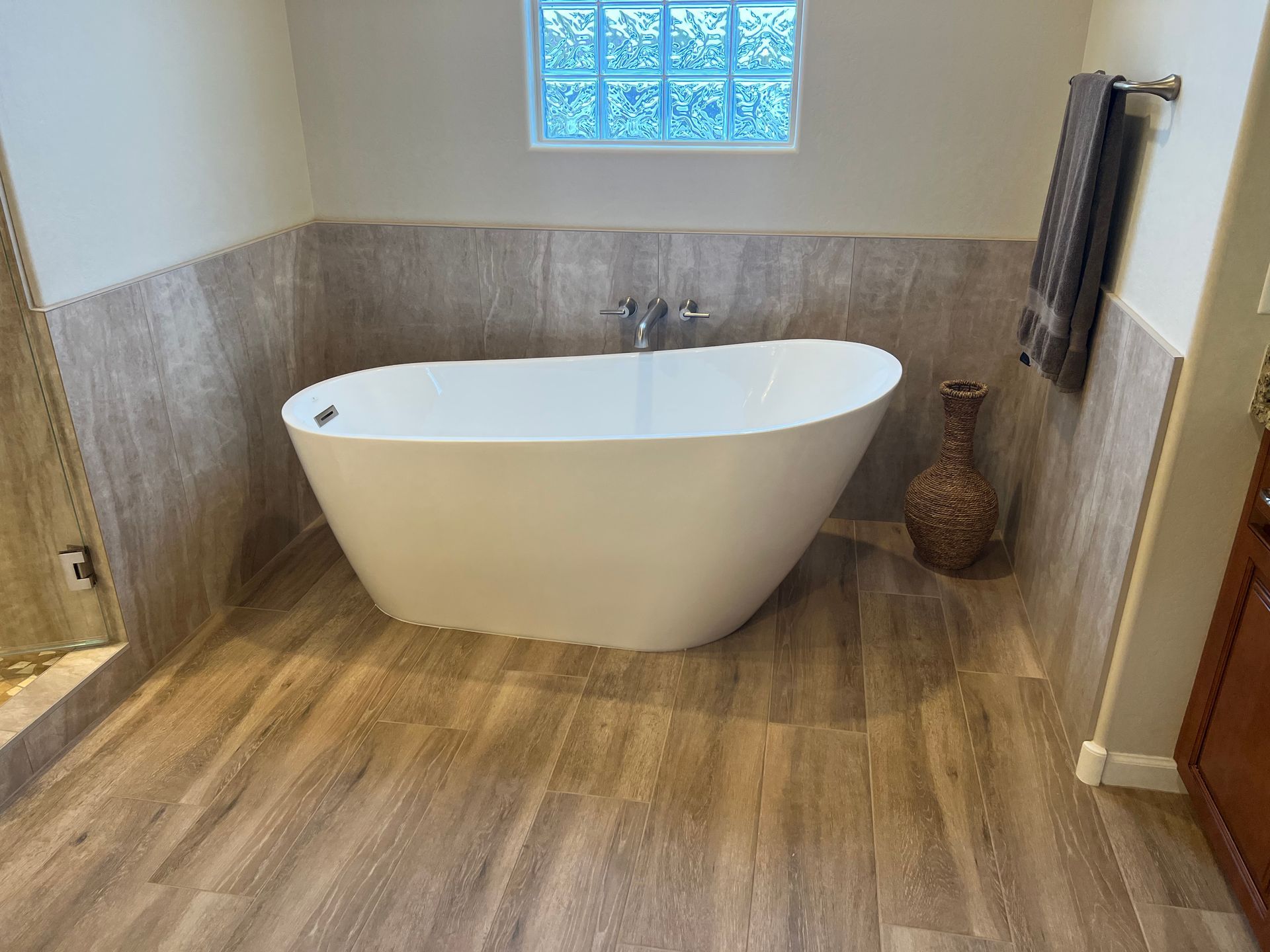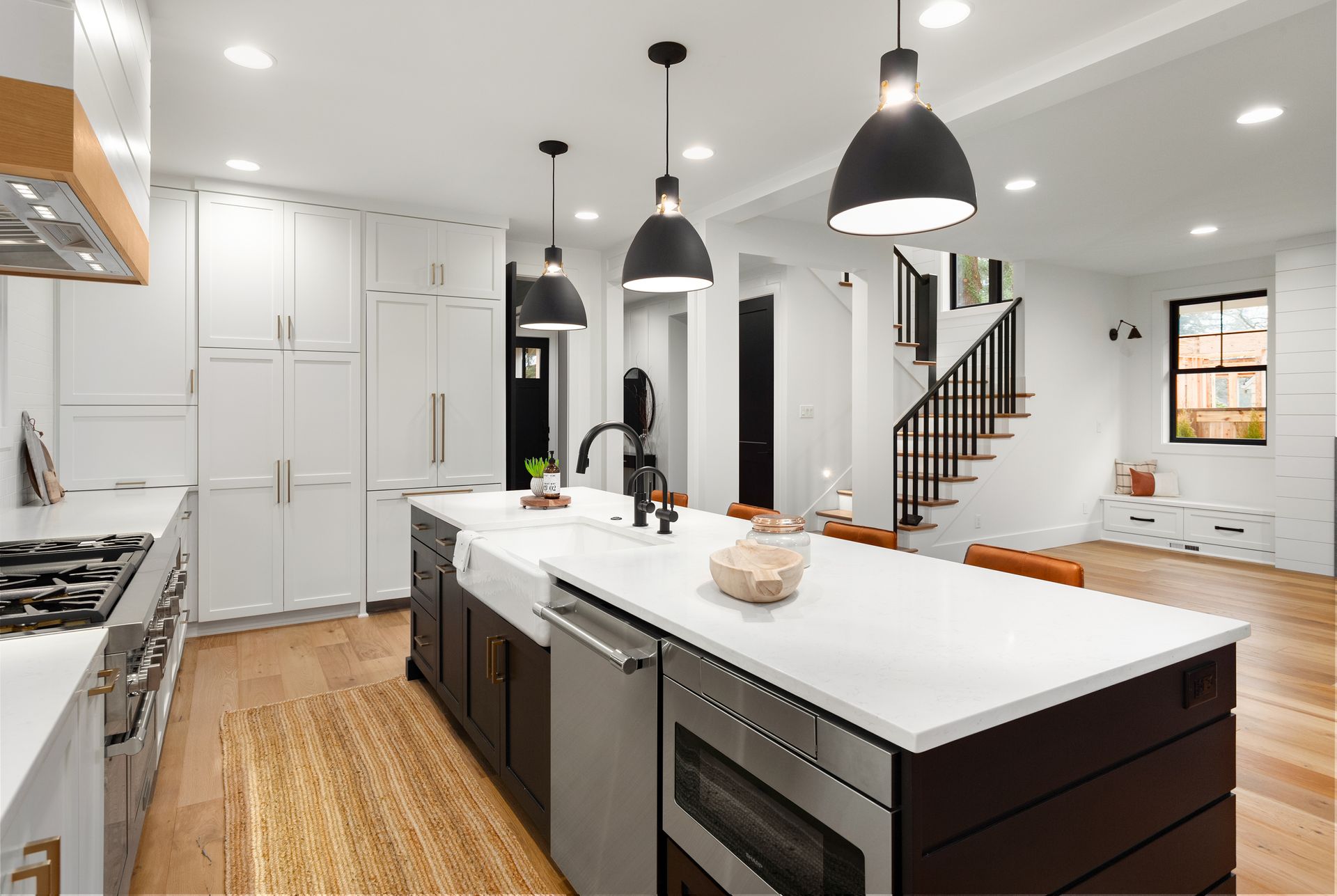Get In Touch
Call: (480) 428-8007
Email: sramos@homeboostaz.com
Business Hours
- Mon - Fri
- -
- Sat - Sun
- Closed
Service Areas
Phoenix, Mesa, Scottsdale, Glendale, Chandler, Tempe, Gilbert, Peoria, Surprise, Goodyear, Avondale, Buckeye, Apache Junction, Fountain Hills, Sun City in Arizona.
Choosing the Right Cabinet Materials: A Comprehensive Guide
Choosing the Right Cabinet Materials: A Comprehensive Guide
A kitchen or bathroom renovation is not just about choosing the right layout, appliances, or colors. At the heart of a successful and satisfying makeover is the choice of appropriate cabinet materials. The right materials will not only enhance the overall aesthetic appeal but also determine the durability, functionality, and lifespan of your cabinets. They can significantly influence the cost and the environmental impact of your renovation project. Hence, your choice will not only reflect your style, but also your lifestyle, your budget, and your commitment to the environment.
In this comprehensive guide, we will delve into a variety of factors that you must consider while
choosing the right cabinet materials. We will start by discussing the basic types of materials you could choose from, including wood, laminate, thermofoil, stainless steel, and more. Each material type comes with its own set of pros and cons, and we will explore these in detail. We will also touch upon the sustainability aspect of each material, a concern that is becoming increasingly significant in the present day.
Beyond material types, we will look at the importance of quality hardware, the influence of color and finish, and the impact of proper installation and maintenance. By the end of this guide, you will have a thorough understanding of the many aspects involved in choosing the right cabinet materials.
Understanding Cabinet Materials
The term 'cabinet materials' refers to the types of substances used in the construction of cabinets, and these can range from wood to particle board, metal, and more. The choice of material is crucial as it directly influences the durability, aesthetics, and overall quality of your cabinets.
Different Cabinet Materials
Wood is one of the most commonly used materials for cabinets due to its strength, versatility, and natural beauty. It's available in various types like oak, cherry, maple, and more, each with its unique grain patterns and color variations. However, solid wood can be expensive and may require regular maintenance to maintain its appearance. Particle board, on the other hand, is a budget-friendly alternative made by compressing wood particles and resin. Though it lacks the strength and longevity of solid wood, it's resistant to warping and offers a smooth surface for laminates and veneers. Metal cabinets, often made from stainless steel or aluminum, offer a sleek, modern look and are highly durable and easy to clean, making them a popular choice for contemporary kitchens.
The Importance of Cabinet Material
The importance of cabinet material cannot be overstated. The right material can enhance the aesthetic appeal of your space, adding value to your home. It can withstand daily wear and tear, ensuring your cabinets remain functional and attractive for years. Furthermore, it can influence the overall cost of your renovation project. For instance, while solid wood cabinets may require a larger initial investment, they can last for decades, offering excellent value for money in the long run. Conversely, while particle board cabinets may be more affordable upfront, they may need to be replaced sooner, potentially leading to higher costs over time.
Types of Cabinet Materials
In the 'Types of Cabinet Materials' section, we take a closer look at the specifics of the various cabinet materials we previously mentioned. These include wood, plywood, medium-density fibreboard (MDF), particleboard, and stainless steel.
Wood Cabinets
Wood cabinets are the epitome of timeless beauty and durability. Available in a wide array of species like oak, maple, and cherry, each offers unique grain patterns and colors. However, solid wood is susceptible to humidity and temperature changes, causing potential warping or cracking over time. It also demands a higher investment, which might not be ideal for budget-restricted renovations.
Plywood
Plywood is a robust and versatile material, consisting of multiple thin layers of wood veneer glued together. This makes it resistant to cracking, shrinking, and warping, providing a sturdiness that rivals solid wood. Despite its slightly lower cost, plywood still sits on the pricier side of the material spectrum.
Medium-Density Fibreboard
Medium-density fibreboard (MDF) is a popular choice for painted cabinet doors due to its smooth surface. MDF is created by breaking down hardwood or softwood residuals into wood fibers and combining them with wax and a resin binder. While it doesn't warp or crack like solid wood, MDF is not as resistant to moisture and can be susceptible to damage over time.
Particleboard
Particleboard, also known as chipboard, is made from wood chips, sawmill shavings, or even sawdust, bound together with synthetic resin. It's the most cost-effective option, but it lacks the strength and durability of other materials. It's more prone to damage from moisture and heavy use, which can shorten its lifespan.
Stainless Steel Cabinets
Stainless steel cabinets offer a sleek, modern aesthetic, ideal for contemporary kitchens. They are highly durable, resistant to heat and moisture, and easy to clean. However, they can show fingerprints and scratches more readily than wood or other materials, and they're typically the most expensive option.
Each material comes with its own set of advantages and drawbacks, making the decision highly dependent on your specific needs, style preferences, and budget.
Factors to Consider When Choosing Cabinet Materials
Durability
In the process of choosing the right cabinet materials, various factors come into play. These factors include durability, cost, maintenance, and aesthetic appeal, each of which has a significant influence on the ultimate choice of material. When considering durability, it's essential to evaluate the longevity of the material. For instance, wood and plywood are renowned for their high durability.
Cost
However, these materials are generally more expensive than alternatives such as MDF and particleboard, which may not last as long but offer cost-effectiveness. Stainless steel, on the other hand, provides both durability and a modern look but comes at a higher cost. Thus, your budget plays a crucial role in your choice of material.
Maintenance
Maintenance is another factor to consider. Some materials require more upkeep than others. For example, wood cabinets need to be regularly polished to maintain their luster, while stainless steel cabinets need to be cleaned often to prevent fingerprints and smudges. Alternatively, MDF and particleboard cabinets require less maintenance but may be more susceptible to damage over time.
Aesthetic Appeal
Lastly, the aesthetic appeal of the material should align with your style and the overall design theme of your space. While wood and plywood offer a classic, natural beauty, stainless steel can lend a sleek, modern vibe to your kitchen. MDF and particleboard, although less expensive, can be customized with a variety of finishes to match any decor. Therefore, when choosing a cabinet material, it's important to assess how these factors—durability, cost, maintenance, and aesthetic appeal—align with your individual needs and preferences.
Popular Cabinet Material Choices and Their Applications
Building upon the foundation of understanding cabinet materials, three popular cabinet choices that stand out are hardwood, plywood, and medium-density fiberboard (MDF). Each of these materials presents unique characteristics, advantages, and considerations.
Hardwood
Hardwood, renowned for its durability and timeless appeal, easily fits into a variety of design aesthetics, from traditional to contemporary. Its sturdy nature makes it an excellent choice for heavily used areas in the home, though its high cost and maintenance needs may be a deterrent for some homeowners.
Plywood
Plywood, on the other hand, is a versatile and cost-effective alternative to hardwood. Made by gluing together thin layers of wood veneer, plywood exhibits impressive strength and resistance to warping. It performs excellently in humid environments, making it ideal for bathroom and kitchen cabinets. Its smooth surface accepts a variety of finishes, allowing homeowners to achieve a range of styles from rustic to modern.
MDF
Lastly, MDF, a composite material made from recycled wood fibers and resin, offers a uniform texture that is ideal for painted finishes. It is less expensive than solid wood and plywood, making it a budget-friendly option. However, MDF is less resistant to moisture and can be prone to swelling and warping if not properly sealed. Its smooth surface and affordability make it a popular choice for contemporary or minimalist design styles.
In conclusion, the choice of cabinet material should be dictated by functionality, budget, and aesthetic preferences. Hardwood offers longevity and classic appeal, plywood provides versatility and resilience, and MDF is budget-friendly with a modern appeal. It’s important to evaluate each material about your specific needs and design vision to make the most informed choice.
How to Maintain Different Types of Cabinet Materials
After choosing your cabinet materials, it's equally important to understand how to maintain and care for them, as this can significantly extend the life of your cabinets. Each material requires a unique approach to maintenance due to its different properties and characteristics.
Hardwood Cabinets
Hardwood cabinets, while durable and versatile, require regular cleaning and occasional polishing to maintain their luster. Avoid harsh chemical cleaners as they can damage the wood's finish. Instead, use a soft, damp cloth for regular dusting, and mild soap and warm water for more intensive cleaning. Remember to dry the surface thoroughly after cleaning to prevent water stains.
Plywood Cabinets
Plywood cabinets are robust and resistant to humidity, making them popular for many homeowners. To clean plywood cabinets, use a mild detergent or soap diluted in warm water. Avoid using excessive water to prevent warping. It's also important to regularly check for signs of damage or wear, such as peeling veneer, as early detection can prevent further damage.
MDF Cabinets
MDF cabinets, though budget-friendly, are susceptible to moisture damage, so it's vital to keep them dry. Wipe up any spills immediately, and avoid using water-based cleaning products. A microfiber cloth is perfect for dusting, while a small amount of oil soap mixed with warm water can be used for deeper cleaning. Regular sealing is also required to protect the MDF from humidity.
The Importance of Proper Maintenance
The importance of proper maintenance cannot be overstated. Not only does it extend the lifespan of your cabinets, but it also preserves their aesthetic appeal, making your kitchen or bathroom look clean and well-cared for. Regular cleaning and timely repair of minor damages can save you from costly replacements in the future.
Conclusion
In conclusion, we have traversed through an expansive guide on choosing the right cabinet materials, outlining the key characteristics, advantages, and disadvantages of hardwood, plywood, and MDF. From the versatility and elegance of hardwood, the affordability, and durability of plywood, to the cost-effectiveness and easy customization of MDF, each material presents unique attributes that make it suitable for different needs and preferences.
The maintenance requirements of each material, as previously discussed, further influence their suitability. Hardwood cabinets, while aesthetically pleasing, require regular gentle cleaning and occasional polishing. Plywood cabinets, on the other hand, can be cleaned with a mild detergent but require regular inspection for signs of damage. MDF cabinets, although cost-effective and customizable, need to be kept dry and require regular sealing to protect against moisture.
Choosing the right cabinet material is a significant decision that directly influences the durability, functionality, and aesthetic appeal of your kitchen or bathroom. Therefore, it's imperative to consider all these factors - the pros and cons of each material, your budget, the desired aesthetic, and the level of maintenance you're willing to commit to.
In the end, the right cabinet material for you aligns with your personal design preferences, fits within your budget, and can successfully withstand the wear and tear of your daily routines. Whether you're remodeling an existing space or designing a new one, this guide serves as a comprehensive resource to help you make an informed decision on the best cabinet material for your project. Select or design the perfect cabinets for your home with Home Boost Remodels, LLC. Their expertise ensures personalized solutions that enhance functionality and aesthetics, bringing your vision to life with quality craftsmanship and attention to detail.
Name, Address, and Phone
Home Boost Remodels, LLC
4748 W Solano Dr N, Glendale, AZ, 85301, US
602-313-1697
Social Media’s
https://instagram.com/homeboostremodelsllc
https://facebook.com/HomeBoostaz
Welcome to Home Boost Remodels, LLC - your trusted source for premium cabinet design and installation services in Glendale, AZ, and the surrounding areas. With years of experience serving the community, we take pride in enhancing homes with functional and stylish cabinetry solutions.
Located in the heart of Glendale, AZ, our team at Home Boost Remodels, LLC is dedicated to transforming your living spaces into elegant and efficient havens. Whether you're looking to revamp your kitchen, bathroom, or any other area of your home, our expert craftsmen are here to bring your vision to life.
Glendale, AZ is not only known for its vibrant community but also for its rich cultural heritage and diverse attractions. As you explore this beautiful city, be sure to visit historic Downtown Glendale, where you can stroll through charming shops, dine at local eateries, and immerse yourself in the unique atmosphere.
For outdoor enthusiasts, Glendale offers a plethora of parks and recreational facilities, including Thunderbird Conservation Park and Sahuaro Ranch Park, perfect for enjoying nature and outdoor activities with family and friends.
At Home Boost Remodels, LLC, we understand the importance of blending functionality with aesthetics when it comes to cabinet design. Whether you prefer sleek modern designs or timeless classics, our team will work closely with you to create custom solutions that complement your home's style and meet your specific needs.
From initial consultation to final installation, our goal is to exceed your expectations at every step of the process. With our attention to detail and commitment to quality, you can trust Home Boost Remodels, LLC to deliver exceptional results that enhance the beauty and functionality of your home.
Ready to elevate your living spaces with premium cabinet design and installation services? Contact Home Boost Remodels, LLC today to schedule your consultation and take the first step towards transforming your Glendale, AZ home.
Remember, when it comes to cabinet design and installation in Glendale, AZ, Home Boost Remodels, LLC is your trusted partner for excellence. Experience the difference with our unparalleled craftsmanship and personalized service.
Home Boost Remodels, LLC
Phone
Business Hours
- Mon - Fri
- -
- Sat - Sun
- Closed
Business Hours
- Mon - Fri
- -
- Sat - Sun
- Closed
Service Areas
Phoenix, Mesa, Scottsdale, Glendale, Chandler, Tempe, Gilbert, Peoria, Surprise, Goodyear, Avondale, Buckeye, Apache Junction, Fountain Hills, Sun City in Arizona.

